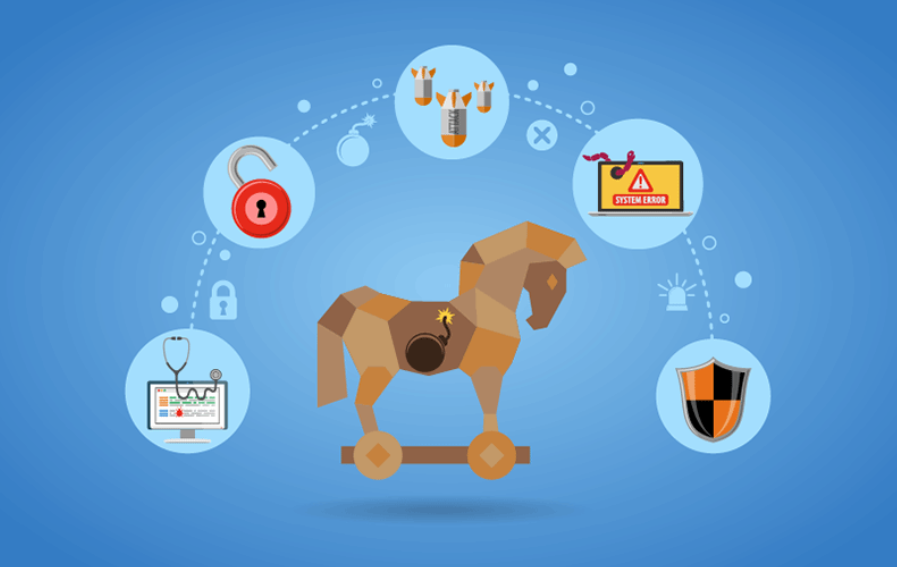A Trojan horse or Trojan is a malware, which is malicious software that performs self-replications by inserting its code into the other programs. Trojan is coined after the “Trojan horse” in Greek mythology. A large wooden horse was made in the name of peace towards the Trojan and Troy which had thousands of hideous soldiers inside it, who would later invade overnight and capture it. Similarly, Trojan intends to disrupt damage, steal or perform harmful action to the network or data. This malware tricks computers and seeks to deceive the network into loading and to execute the malware on the device. After the installation, it can perform the action it was designed to do. Trojan sometimes misinterprets as a virus, but it is not as viruses can replicate themselves, but Trojan fails to do so. Someone has to execute it. If you somehow have also been a target of the hackers, you must approach a reliable cyber security expert like BITS.
TYPES OF TROJAN VIRUSES:
1) Backdoor Trojan: this Trojan creates the backdoor in the network for the attackers to access the network and invade it. The third-party could steal the data.
2) Exploits: Trojan analyses the security vulnerability available in the PC and exploits its software.
3) Rootkits-Rootkit enables the third party/hacker to extract unauthorized data from the user computer.
4) Trojan banker- this Trojan introduces itself as the banking website and rob the user’s money.
Some other Trojans are- DDoS, Trojan downloader, Trojan-fake AV, Trojan-ransom, Trojan-spy, SMS Trojan, Trojan IM, Remote access Trojan and so on.
To purchase the security software, you can go to the website like X-Tech Buy.
PROTECTION AGAINST TROJAN HORSES VIRUS:
it is tough to trace a Trojan in the device, but if the device is suspected of being breached by a Trojan, it shows poor device performance, strange device behavior, pop-up and spam interruptions. There are few safeguards that users can follow to protect their devices from Trojan malware’s attack in future:
1) Always uses complex and unique passwords using letters, symbols and numbers to protect the accounts.
1) Never download or install software from unauthorized sources.
2) The software should be updated with the latest patches.
3) Install Trojan antivirus in the computer for better detection and protection.
4) Do not run the program or open attachment from miscellaneous emails.
5) Use a firewall which will block all the unwanted and avert the Trojan horse viruses.
6) Always backup all the files present on the computer. If a Trojan infects the device, it will help to restore the data.
7) Do not visit random websites.
8) Do not click on the pop up that advertises free programs.
The Trojan attack can happen with anyone. Not only as the purpose to steal the data but also to destroy or exploit the users’ information and leave them defenceless. Always keep the computer at the secure endpoint against viruses. Installing a good antivirus is the need for every device to protect it from the various harmful viruses which are potential to create damage in the device. Once the user is the victim of the Trojan malware, they will be on the losing side.it is always better to be on the safe side by being alert, careful and risk-free, regardless of the type of device the user is working with; data and device security is the main aim.To secure your home computer well, you are suggested to contact your local computer expert like “Computer Repair Onsite”.

